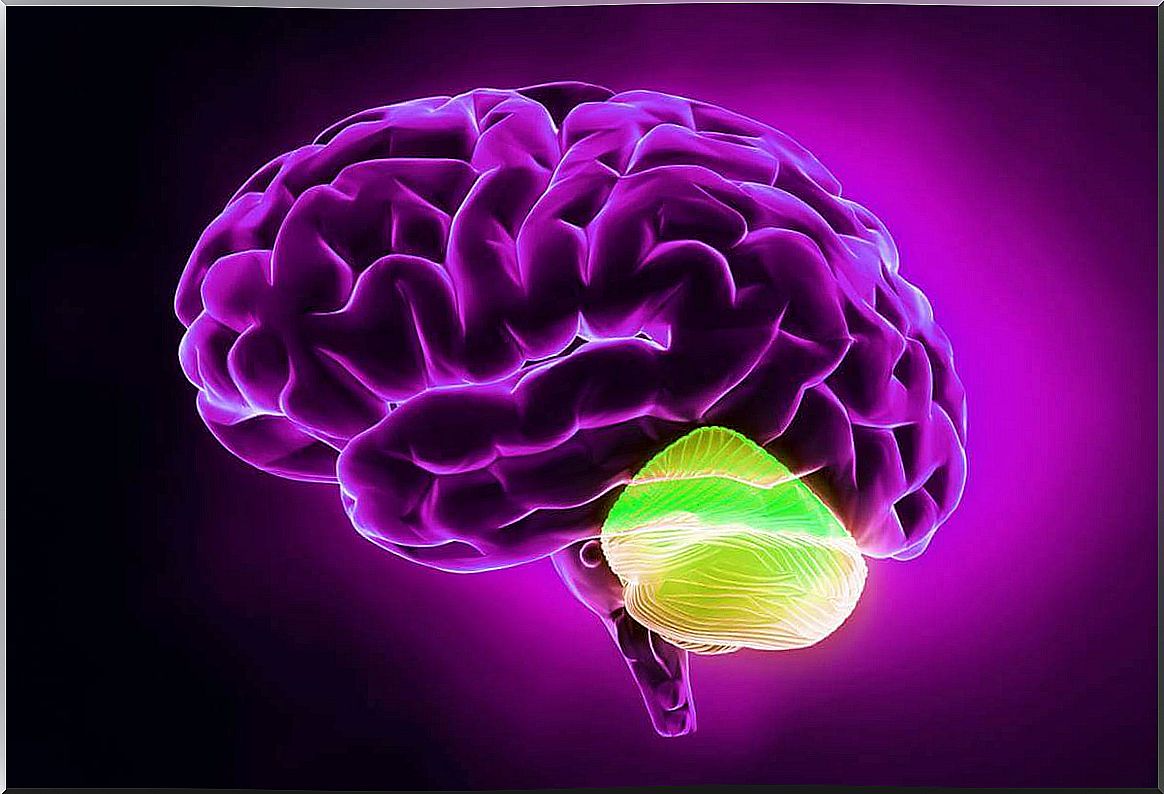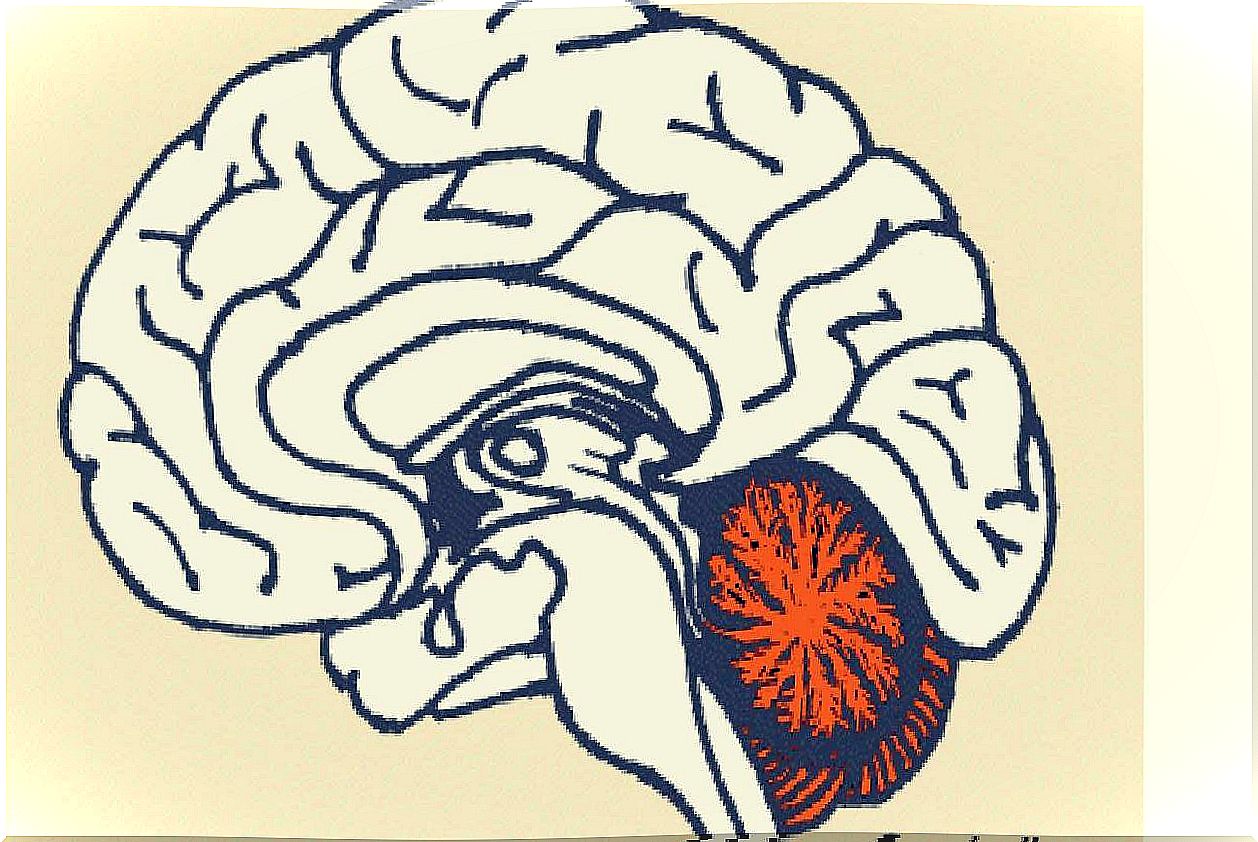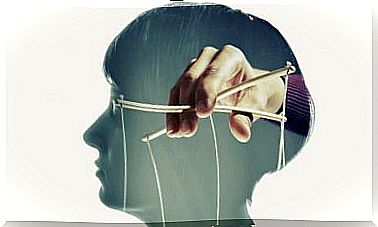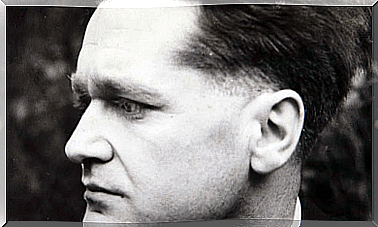Cerebellum And Divergent Thinking: An Amazing Relationship

The cerebellum and divergent thinking are related in amazing, disturbing, and decisive ways. Which does not stop calling our attention because until recently we took it for granted that the only functions that this organ performed were related only to motor memory or coordination. To this day, we know that it is decisive in a good part of the higher cognitive processes.
It is interesting to know that one of the first people to be fascinated by the cerebellum was Leonardo da Vinci. It was around the year 1504 when, in one of his furtive nights of research with corpses to understand human physiology, he found that area located in the posterior cranial fossa. He simply called it “small brain (cerebellum).”
Later, and between the seventeenth and nineteenth centuries, its role was discovered in dimensions such as balance, posture, motor learning or fine motor skills (such as being able to write). From then until today, that little brain has been both underestimated and misunderstood, despite the fact that many neurologists already sensed its relevance.
It is time to give it the relevance it deserves and understand how it helps us on a day-to-day basis.

Cerebellum and divergent thinking, how are they related?
This data should attract our attention: the cerebellum accounts for little more than 10% of the total brain volume. However, it houses almost 80% of the total neurons in the brain. Something like this already gives us an inescapable clue that its significance may be much greater than we initially thought. Therefore, to deduce that it can be in charge of more than motor tasks is logical.
We know, for example, that thanks to this body we drive or cycle without having to “remember” how to do it. That is, the cerebellum facilitates and integrates motor memory and automates a large part of the movements we do every day. However, it has not been until the last decade that scientists have begun to pay more attention to this area to discover multiple aspects. They are as follows.
Cerebellum and divergent thinking
- The cerebellum has a very dense connectivity with multiple brain areas. This region is so compact and highly interconnected that it is present in a large number of higher cognitive processes.
- The cerebellum is related to skills such as communication, creativity and the ability to think in an original and innovative way (divergent thinking).
- Also, something very important has been seen. The disorders of the autistic spectrum (TEA) are closely related to Purkinje cells and cerebellum. Children who have better brain-cerebellum connectivity and show better motor skills develop better communication and socialization skills.
Allan Reiss, professor of radiology, psychiatry, and behavioral sciences at Stanford University, notes the following:
The cerebellum and fluid intelligence
Remember, fluid intelligence refers to that ability to perform mental operations and solve problems in an original way without any prior knowledge. That is, it defines the ability to face challenges without having to have studied before, for example, a career or read an instruction manual.
Well, the cerebellum and divergent thinking are related to this type of intelligence. Mihály Csíkszentmihályi even points out that this type of competition is the one that achieves greater synchronization and connectivity of the cerebral hemispheres. We now know that the cerebellum is also involved in this process.

We have a serious problem with the cerebellum
We already know of the great relevance of this organ that attracted so much the attention of Leonardo da Vinci. We are clear that the cerebellum and divergent thinking are significantly related. Now, there is a problem – or indeed, several -.
- The cerebellum atrophies with sedentary lifestyle, lack of exercise, and a passive lifestyle.
- Excessive exposure to computer and mobile phone screens reduces their size and connectivity.
These two dimensions are serious enough to make us think. Today, we are relying more and more on the use of technology, to the point of letting it do the thinking for us. We hardly do mental math. We hardly know how to orient ourselves through a city without resorting to GPS.
Furthermore, handwriting is in danger of extinction because… why take a pencil and paper if we have a word processor? We do not realize it, we are not aware, but all of this has a serious impact.
Letting our devices replace many of the tasks we did mentally or manually results in cerebellar atrophy. In a slow and premature aging of an essential region for the human being and our progress. Let’s think about it.









